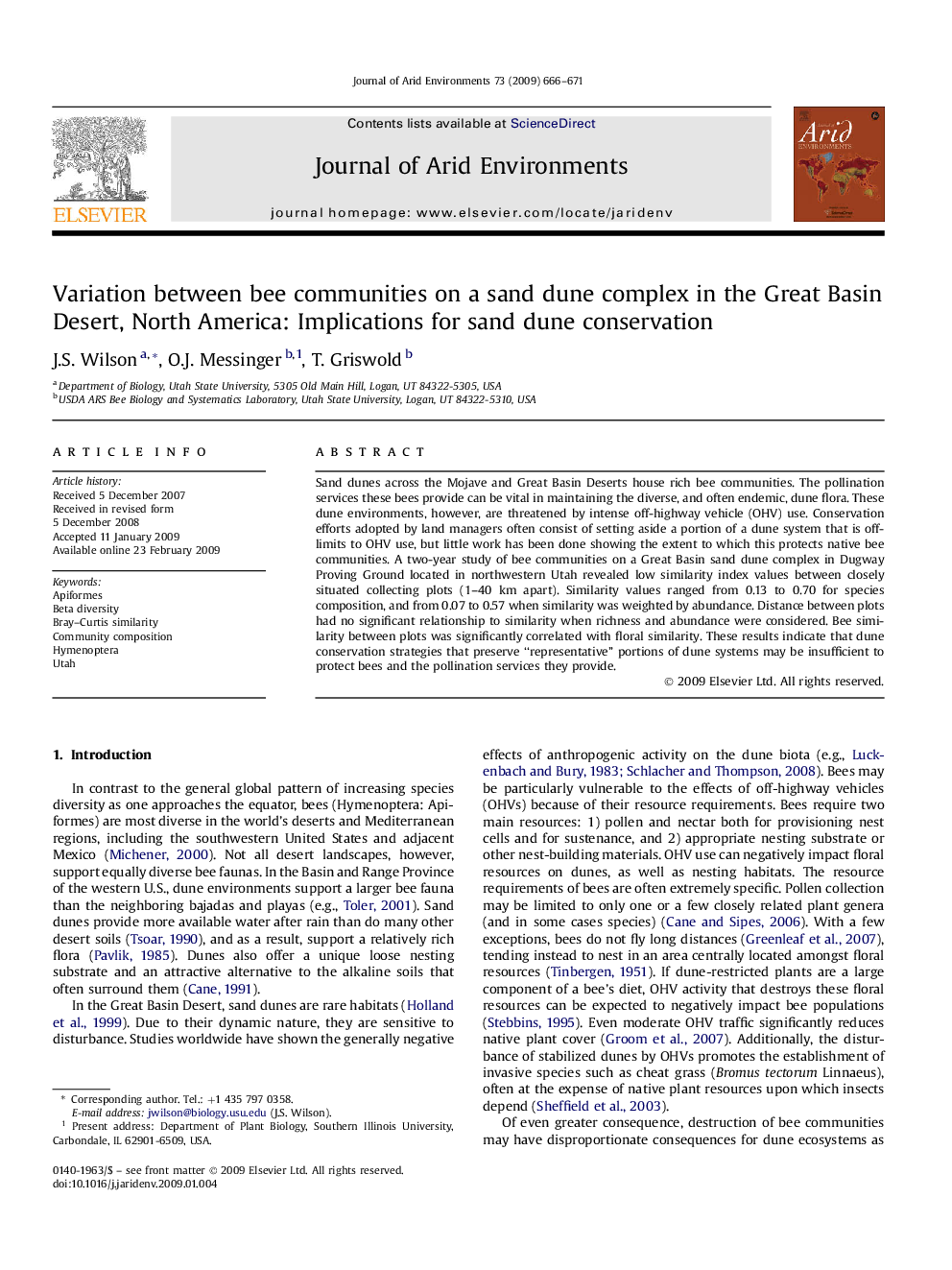| Article ID | Journal | Published Year | Pages | File Type |
|---|---|---|---|---|
| 4393782 | Journal of Arid Environments | 2009 | 6 Pages |
Sand dunes across the Mojave and Great Basin Deserts house rich bee communities. The pollination services these bees provide can be vital in maintaining the diverse, and often endemic, dune flora. These dune environments, however, are threatened by intense off-highway vehicle (OHV) use. Conservation efforts adopted by land managers often consist of setting aside a portion of a dune system that is off-limits to OHV use, but little work has been done showing the extent to which this protects native bee communities. A two-year study of bee communities on a Great Basin sand dune complex in Dugway Proving Ground located in northwestern Utah revealed low similarity index values between closely situated collecting plots (1–40 km apart). Similarity values ranged from 0.13 to 0.70 for species composition, and from 0.07 to 0.57 when similarity was weighted by abundance. Distance between plots had no significant relationship to similarity when richness and abundance were considered. Bee similarity between plots was significantly correlated with floral similarity. These results indicate that dune conservation strategies that preserve “representative” portions of dune systems may be insufficient to protect bees and the pollination services they provide.
